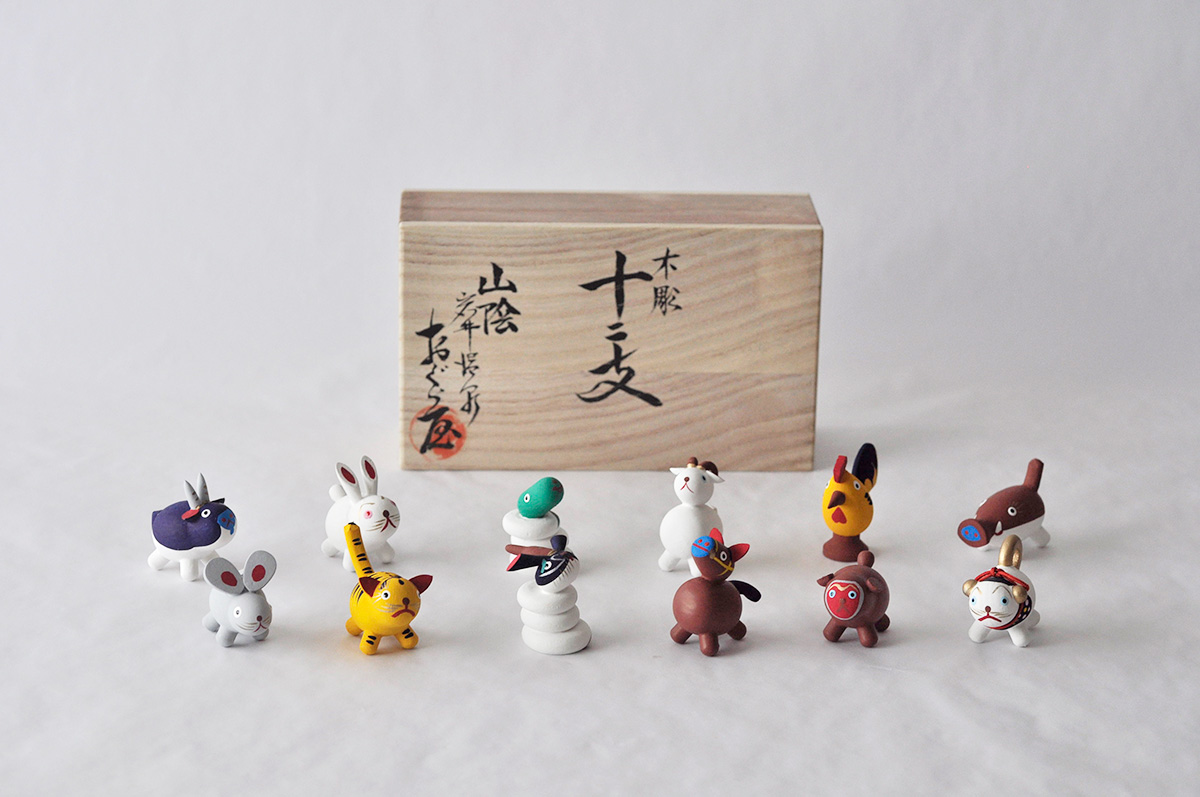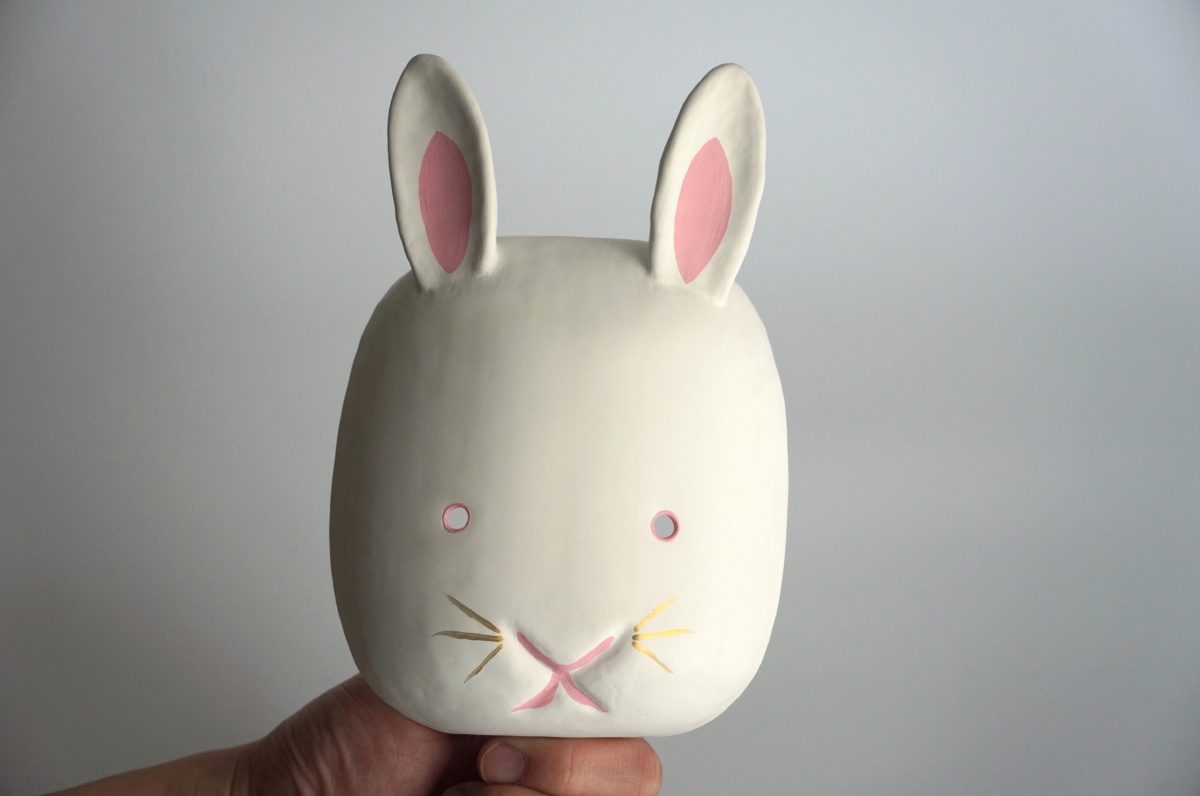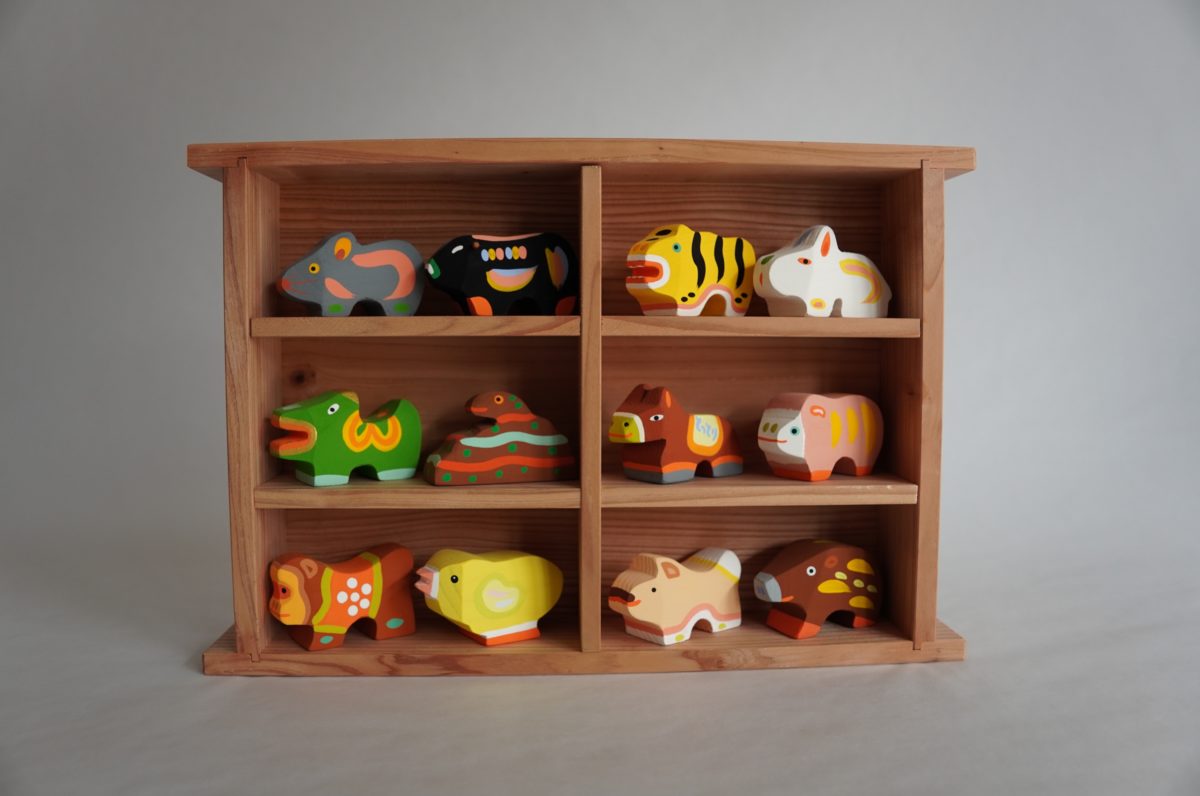Category
ーOguraya
Traditional toy/Iwami Town, Iwami County, Tottori Prefecture

Ogura-ya is located in a corner of the hot spring resort of Iwai Hot Springs, the oldest in the Inaba region.
About 200 years ago, Sahei Ogura, a woodcrafter, started making mincings, and the eighth generation of the Ogura family, following in his footsteps, added original designs and techniques to the traditional mincings to create the twelve signs of the Chinese zodiac. The dolls are made entirely of minced wood and colored with mud paint.
Yanagiya reproduct
Traditional toy/Tottori Prefecture

Yanagiya was a local toy workshop in Tottori City, Tottori Prefecture. They made folk toys for 86 years, from 1928 to 2014. “Yanagiya” comes from the proverb, “Willow trees never break in the snow.” Tatsunosuke Tanaka, the founder of Yanagiya, created toys based on the history and legends of the Inaba region. He also devoted himself to restoring toys that had fallen into disuse. For many years, he researched and created toys with his wife, Toshiko. Yanagiya was passed on to their daughter and her husband. Yanagiya’s work fully embodied the meaning of the company name. They created over 50 toys, including Japanese paper mache masks, clay figures, and wooden toys.
In 2020, a new group of creators known as YANAGIYA REPRODUCT formed. They devoted themselves to learning the techniques of Kinji and Miyako Tanaka and to the reproduction of Yanagiya folk toys.
Hakota Doll Workshop
Traditional toy/Kurayoshi City, Tottori Prefecture

Bingo-ya is a toy workshop in Kurayoshi City, Tottori Prefecture, that has been operating for over 200 years. Founded in the late Edo period, the company has made toys since 1781.
The area around the workshop used to be bustling with many merchant families who used paper to keep books and write letters. It is said that Bingo-ya reused that paper to make hariko papier-mâché toys for children.
Hariko is a Japanese papier-mâché craft. To make hariko, paper is stretched over a wooden mold, the paper-mâché is removed from the wooden mold, the base is coated with gofun (white paint made from crushed shells), the paper is colored with Japanese paints, and finally, the paper is glazed with glue.
Shinobu Craft Shop
Traditional toy/Tottori City, Tottori Prefecture

Shinobu Kogeiten was founded in 1946 by Noriyasu Shinobu, who came from a long line of carpentry joiners, and applied his skills to wooden crafts and folk toys.
His son, Kentaro, now runs the studio, incorporating the traditions of his father with modern painting techniques to produce charming, handmade, regional folk toys.